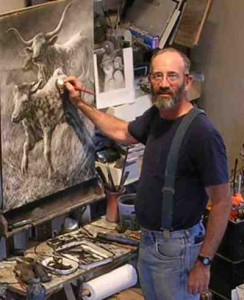Review by Ed Quillen
Outdoors – November 2007 – Colorado Central Magazine
Colorado Wild – An Intimate Portrait of the Centennial State
by Grant Collier
Published in 2007 by Collier Publishing
ISBN 0976921847
GRANT COLLIER is a photographer with a good eye and the technical skills to show us what he sees. In his earlier volumes, he generally presented big pictures of the expansive landscapes we associate with Colorado. In this book, shorter and smaller than his others, usually he brings us up close.
As he puts it in the introduction, “When I first took up photography, I focused almost exclusively on the vast landscapes of the American West…. Oftentimes, the vegetation I trod over while photographing larger scenes would have yielded better photographs than the ones I ultimately captured.” He discovered that “The longer I spend photographing these intimate scenes, the more I am able to see patterns and details that initially eluded me.”
So in general, “intimate scenes” are what you find here. Think of dew droplets dominating an aspen leaf, and you get the idea, although there are a few shots of more expansive views, from lakes to mountain ranges.
Some of these pictures, all reproduced on coated paper to National Geographic standards, look more like abstract art than scenes from nature — if the caption hadn’t told me, I would never have guessed the origins of some tree-bark patterns. They’re graphics that engage the eye, just like the unusual top-down view of a yucca plant that illustrates its symmetry, or the swirls of skunk-cabbage leaves.
Collier follows his usual, and commendable, course of not telling us too much about where a picture was taken. As a sometime photographer, I would have enjoyed a bit of technical detail — Has he gone digital? How does he get diffused light when he needs it? — but he gives us none.
He does give us images from all over Colorado, including the oft-neglected High Plains, although most shots come from the mountains. There’s only one “Colorado cliché” shot in the book, the familiar image of the power house on the Crystal River near Marble. The other photos provide us with new ways of seeing our territory.
In many ways, we see what we are conditioned to see. Photographs like these teach us to look at the world from a different vantage. Out on a walk up one of the gulches across the river from Salida, I naturally enjoy the emerging panoramic views of the town beneath the big peaks of the Sawatch Range. But now (because I enjoyed Collier’s images of the smaller world, of leaves and flowers and ice and sand), I find myself looking around my feet and focusing on the beauty of the tiny little things I used to ignore during my frequent stops to catch my breath and rest my knees.
There’s a fascination in the infinite configurations of gravel, rock, twigs, pollen, blades of grass, twining vines, morning dew, and fading leaves. But sometimes it takes a few pictures to illustrate what’s been surrounding you for years, sitting unnoticed because you didn’t think to look for it.

